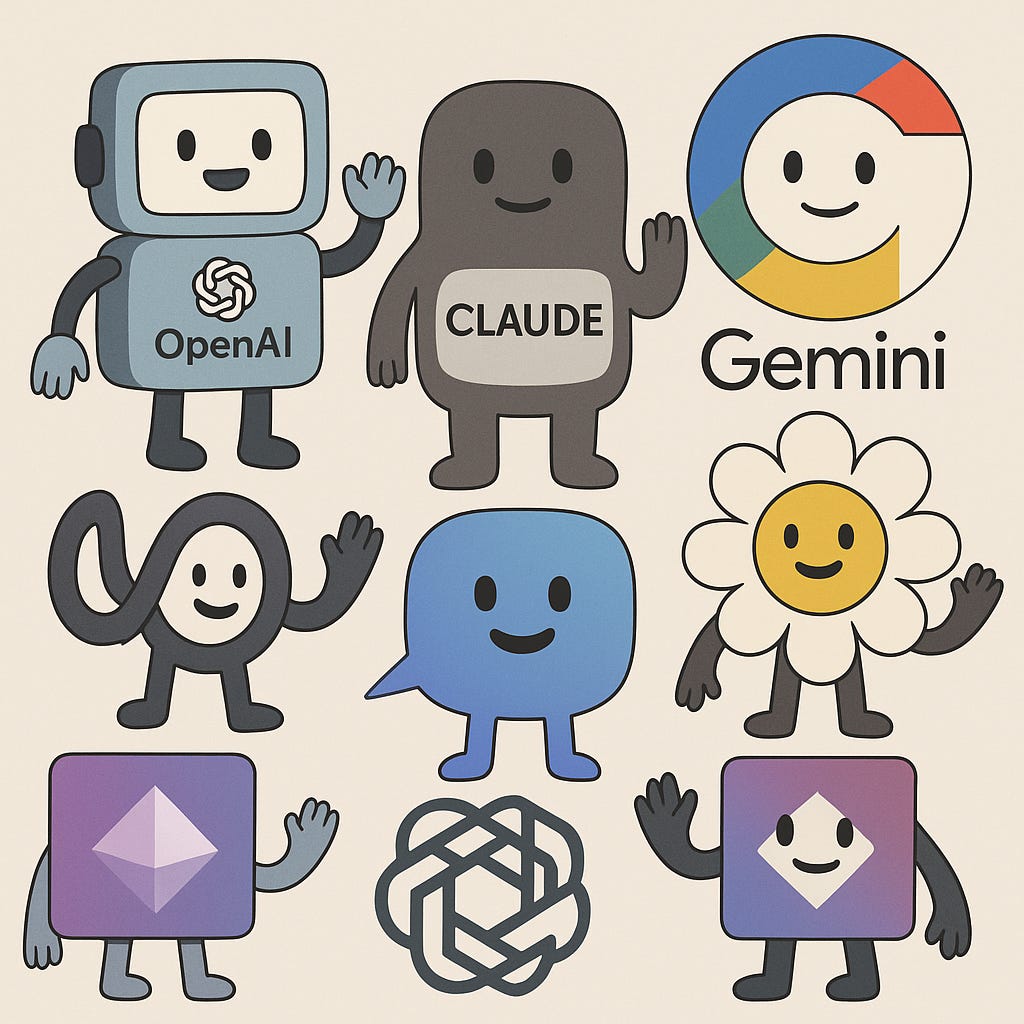The Sequence Radar #700: From GPT-5 to Claude Opus, This Crazy Week in Model Releases
Was this email forwarded to you? Sign up here The Sequence Radar #700: From GPT-5 to Claude Opus, This Crazy Week in Model ReleasesOne of the most incredible weeks in generative AI.Next Week in The Sequence:
Subscribe Now to Not Miss Anything📝 Editorial: From GPT-5 to Claude Opus, This Crazy Week in Model ReleasesIn a normal week, the release of GPT-5 would have been enough for this editorial but not in this week. Four major model releases—GPT-5, gpt-oss, Genie 3, and Claude Opus—signal where frontier systems are headed and how the ecosystem around them is consolidating. The headline isn’t just “bigger models”; it’s increasingly systems-first: planning, tool-use, memory, and grounding are being treated as core capabilities rather than bolt-ons. Together, these launches sketch a stack: generalist reasoners at the top, open and efficient models in the middle, and simulation/generative environments at the bottom that make agents testable—and useful. GPT-5 is framed less as “more params, more benchmarks” and more as a deliberative engine that can decompose tasks, call tools, and keep long-horizon objectives on track. The interesting bits are in orchestration: better control over reasoning depth vs. latency, more reliable function/tool calling, and guardrails that make high-stakes workflows auditable. In practice, that means moving from “answer my question” to “plan, execute across APIs and data sources, and justify the steps you took”—the difference between a chatbot and an operator. On the open side, gpt-oss matters because it raises the floor. A strong, permissively licensed model with clean training and fine-tuning hooks gives teams a credible default for private, cost-sensitive workloads. You won’t route everything to a frontier model—nor should you. Expect usage patterns where gpt-oss handles the 80% of tasks that are routine (summaries, extraction, structured generation), while premium tokens are reserved for reasoning spikes, tricky edge cases, and safety-critical calls. The strategic value here is reproducibility and unit economics, not chasing the very last point on leaderboards. DeepMind’s Genie 3 pushes on a different frontier: world models that you can act in. It’s not just pretty video; it’s controllable, action-conditioned generation that turns prompts into playable scenes and interactive micro-worlds. That unlocks two things: (1) richer pretraining and evaluation beds for agents (you can probe planning, transfer, and failure modes safely), and (2) new creative tools where users sketch mechanics and constraints and the model instantiates a living environment. If the past few years were about text and images, Genie 3 is about dynamics—state that evolves under your actions. Claude Opus remains the banner for careful, reliable reasoning. The emphasis is still on faithful long-form analysis, disciplined tool use, and safety scaffolding that keeps outputs steerable without turning sterile. In enterprise settings—policy generation, sensitive RAG, code reviews with provenance—Opus tends to win not by flash but by consistency under pressure. Think less “one-shot genius” and more “won’t hallucinate a policy clause at 2 a.m.” That reliability compounds when you wire it into agents, where a single ungrounded step can derail an entire run. Put together, the pattern is clear. A modern AI stack will route between (a) a frontier planner (GPT-5/Opus) for decomposition and oversight, (b) efficient open models (gpt-oss) for bulk transformation, and (c) grounded simulators/environments (Genie 3) for training, testing, and human-in-the-loop design. Around that, you need infrastructure that was optional before: evaluation harnesses that catch regressions, telemetry for tool calls and traces, policy layers that are programmable, and memory that’s both cheap and compliant. 🔎 AI ResearchTitle: CoAct-1: Computer-using Agents with Coding as ActionsAI Lab: University of Southern California & Salesforce Research Title: Cognitive Loop via In-Situ Optimization: Self-Adaptive Reasoning for ScienceAI Lab: Microsoft Discovery and Quantum, Office of the CTO Title: Tool-integrated Reinforcement Learning for Repo Deep SearchAI Lab: Peking University & ByteDance Title: GOEDEL-PROVER-V2: Scaling Formal Theorem Proving with Scaffolded Data Synthesis and Self-CorrectionAI Lab: Princeton University, NVIDIA, Tsinghua University, Stanford University, Meta FAIR, Amazon, Shanghai Jiao Tong University, Peking University Title: VeriTrail: Closed-Domain Hallucination Detection with TraceabilityAI Lab: Microsoft Research 🤖 AI Tech ReleasesGPT-5OpenAI released its highly anticipated GPT-5 model gpt-ossOpenAI is back on the open source race with the release of gpt-oss-120b and gpt-oss-20b, two open weight models with robust capabilities in areas such as reasoning, tool usage and many others. Claude Opus 4.1Anthropic released a new version of Claude Opus with strong reasoning, coding and agentic capabilities. Genie 3Google DeepMind released Genie 3, its amazing model that can create realisitic 3D environments. HarmonyOpenAI and HuggingFace open sourced Harmony, a new structured format for LLM responses. Game ArenaDeepMind and Kaggle collaborated on Game Arena, a new tournament environment for evaluating foundation models. 📡AI Radar
You’re on the free list for TheSequence Scope and TheSequence Chat. For the full experience, become a paying subscriber to TheSequence Edge. Trusted by thousands of subscribers from the leading AI labs and universities. |
Similar newsletters
There are other similar shared emails that you might be interested in:


